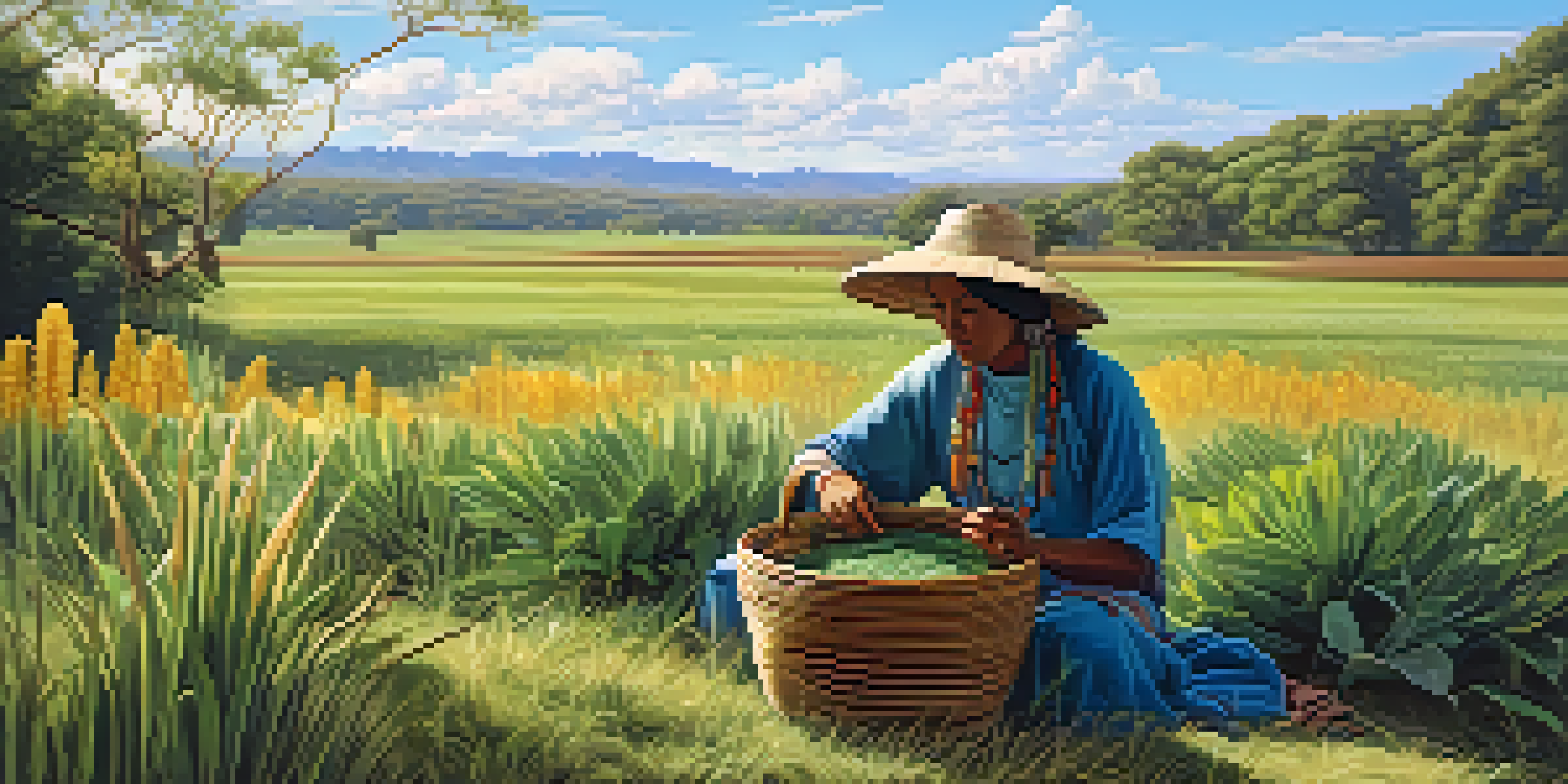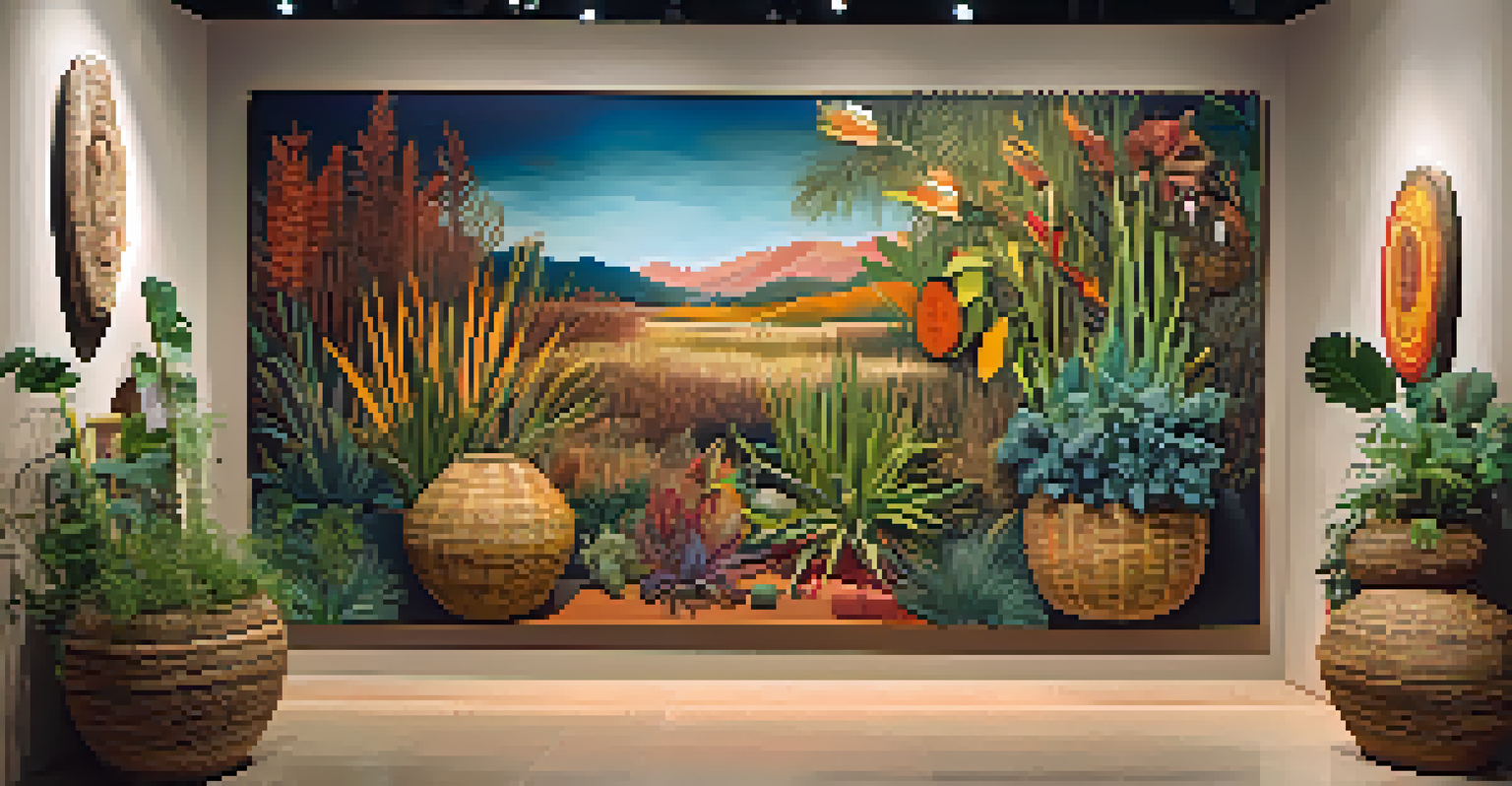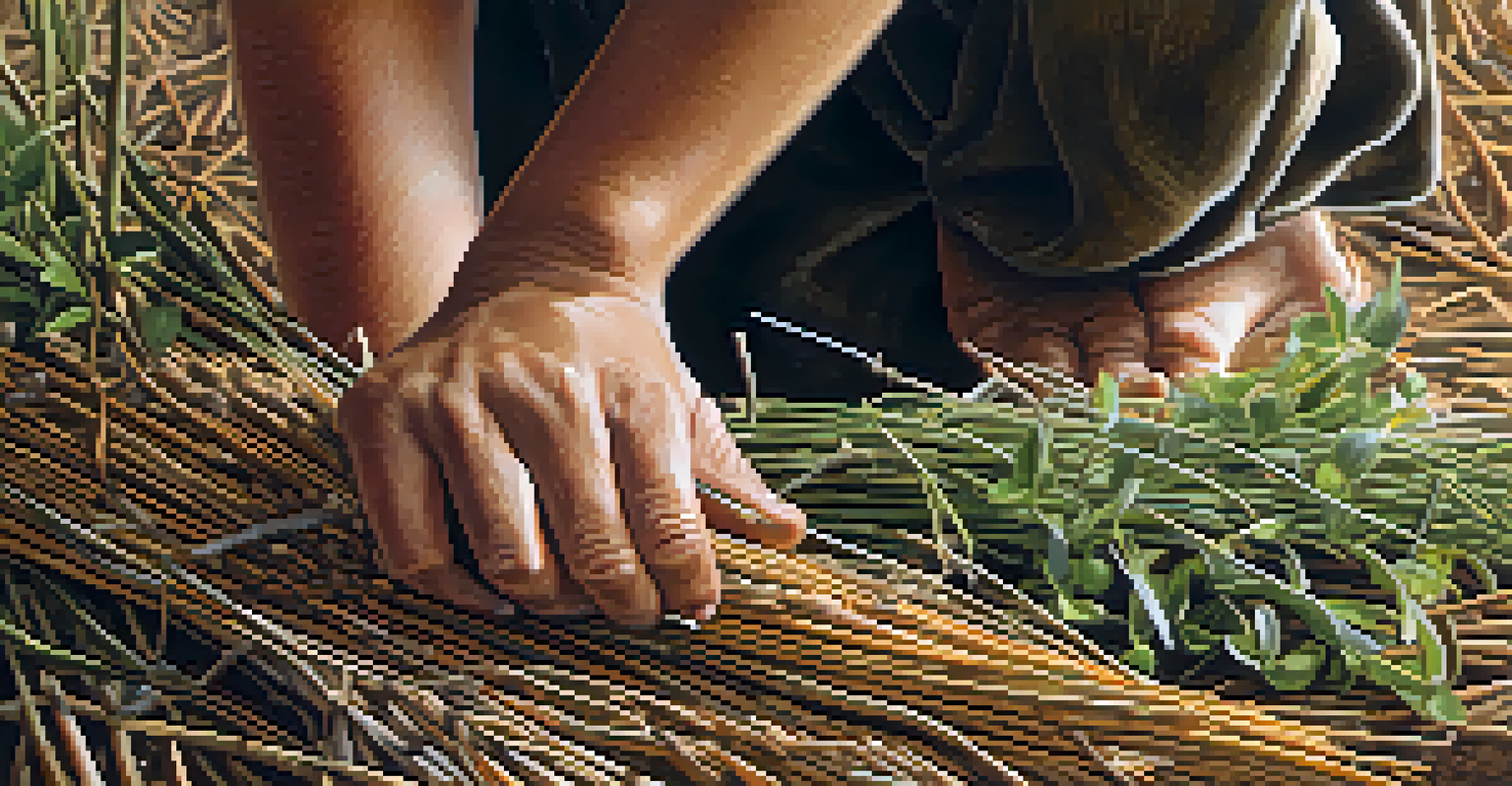Cultural Significance of Plants in Indigenous Art

The Role of Plants in Indigenous Spirituality and Beliefs
Plants hold a sacred place in many Indigenous cultures, often seen as living entities with spirits. They are woven into the fabric of spiritual beliefs, where certain plants symbolize life, death, and rebirth. For instance, sage is commonly used in purification rituals, representing clarity and healing. This deep-rooted connection highlights how plants are not just physical entities but also spiritual guides.
Plants are not just a resource; they are living beings with whom we share our existence.
Indigenous communities often believe in the concept of reciprocity with nature, where plants are respected and treated as kin. This relationship shapes their artistic expressions, where symbols and motifs derived from plants reflect their ancestral wisdom. Art becomes a medium through which these beliefs are shared, allowing others to glimpse their worldview and respect for nature.
In essence, the integration of plants into spiritual practices enriches Indigenous art, making it a living testament to their beliefs. Each artwork carries the essence of the plants that inspired it, telling stories of connection, reverence, and tradition. This interplay between spirituality and art underscores the importance of plants in Indigenous identity.
Symbolism of Plants in Indigenous Artworks
Plants often serve as powerful symbols in Indigenous art, conveying messages about life and the environment. For example, the imagery of the maize plant can represent sustenance and community, illustrating the interdependence of people and nature. Such symbolism is not arbitrary; it is rooted in centuries of tradition and understanding of the natural world.

Artists utilize these symbols to communicate complex ideas and emotions, allowing viewers to engage with their culture on a deeper level. The choice of plants in artworks often reflects the local ecology and the stories tied to specific species. This connection showcases a profound respect for their surroundings, as well as a commitment to preserving their cultural narratives.
Plants as Symbols in Indigenous Art
Indigenous art uses plant symbolism to convey deep cultural messages about life, community, and the environment.
Through the lens of art, these symbols transcend language barriers, offering a universal understanding of Indigenous experiences. As observers interact with these pieces, they are invited to reflect on their own relationship with nature, creating a bridge between cultures. This dialogue is essential for fostering appreciation and respect for Indigenous perspectives.
Traditional Techniques and Plant Materials in Art
Indigenous artists often employ traditional techniques that involve the use of plant materials, showcasing their ingenuity and resourcefulness. For instance, weaving with natural fibers from plants like willow or cedar allows for the creation of intricate baskets and mats. These crafts not only serve practical purposes but also carry cultural significance, often passed down through generations.
Art is the most beautiful of all lies; it allows us to speak about what we cannot say in words.
The choice of materials is deeply intentional, with different plants representing various aspects of life and culture. Many artists prioritize sustainability, ensuring that their practices honor the land and its resources. This approach reflects a harmonious relationship with nature, where the act of creating art becomes a ritual of gratitude.
By using plant materials in their art, Indigenous creators highlight the bond between culture and nature. Each artwork becomes a storytelling medium, revealing the history and teachings of their communities. This connection to traditional techniques enriches the cultural narrative, making the art not just visually compelling but also deeply meaningful.
Plants in Contemporary Indigenous Art Movements
Contemporary Indigenous artists are redefining the role of plants in their works, merging traditional practices with modern techniques. This fusion creates a vibrant landscape where ancient wisdom meets contemporary expression. Artists are increasingly exploring themes of identity, land rights, and environmentalism, using plants as a focal point of their narratives.
For example, some artists incorporate native plants into mixed media installations, inviting viewers to engage with the ecological aspects of their heritage. This modern approach allows for dynamic conversations about sustainability and cultural preservation, resonating with a broader audience. The reimagining of plants in art underscores their ongoing significance in shaping Indigenous identities.
Traditional Techniques Enhance Art
The use of traditional plant materials in Indigenous art showcases cultural significance and sustainability practices.
As these contemporary movements gain visibility, they challenge stereotypes and encourage a deeper understanding of Indigenous cultures. By highlighting the importance of plants, artists advocate for environmental stewardship and cultural resilience. This evolution in Indigenous art reflects the adaptability of traditions while honoring their roots.
Educational Role of Plants in Indigenous Artistic Practices
Plants play a crucial educational role within Indigenous artistic practices, where knowledge is shared through hands-on experiences. Workshops and community gatherings often center around the use of plants in art, teaching younger generations about their cultural significance. This interactive approach fosters a sense of belonging and pride among participants, reinforcing their connection to their heritage.
Through these educational initiatives, artists are not only passing down techniques but also instilling respect for the environment. Participants learn about sustainable harvesting practices and the importance of preserving native plant species. This knowledge is vital for maintaining the cultural landscape and ensuring that traditions endure.
By integrating education into artistic practices, Indigenous communities empower individuals to carry forward their cultural legacy. The process becomes a celebration of identity, where art serves as a powerful tool for teaching and learning. This dynamic exchange enriches not only the artists but also the community as a whole.
The Impact of Globalization on Indigenous Plant Art
Globalization has brought both challenges and opportunities for Indigenous artists, particularly in how they utilize plants in their works. On one hand, the influx of new materials and ideas can inspire creativity, leading to innovative expressions that resonate beyond traditional boundaries. On the other hand, the commercialization of Indigenous art risks diluting its cultural significance.
Artists are now faced with the challenge of navigating these complexities while staying true to their cultural roots. Some choose to blend traditional plant-based art with global influences, creating pieces that reflect a hybrid identity. This evolution can spark meaningful dialogues about cultural appropriation and authenticity in the art world.
Globalization's Dual Impact on Art
While globalization presents opportunities for creativity, it also poses challenges to the cultural integrity of Indigenous plant art.
Ultimately, the impact of globalization on Indigenous plant art highlights the resilience and adaptability of these cultures. Artists continue to assert their identities in a rapidly changing landscape, using plants as symbols of continuity and change. This journey reflects not only their personal stories but also the broader narrative of Indigenous survival and expression in a global context.
Future Directions: Preserving Plant Knowledge in Indigenous Art
Looking ahead, preserving traditional knowledge about plants in Indigenous art is essential for cultural continuity. As climate change and urbanization threaten native plant species, there is an urgent need to document and share this knowledge. Artists and community leaders are increasingly recognizing the importance of collaboration in safeguarding these vital resources.
Initiatives aimed at conservation and education are emerging, focusing on the intersection of art, ecology, and Indigenous knowledge. By engaging younger generations in these efforts, communities can ensure that plant-related practices remain vibrant and relevant. This proactive approach not only benefits the artists but also fosters a greater appreciation for biodiversity.

As Indigenous art continues to evolve, it will be crucial to elevate the voices of artists who prioritize plant knowledge in their work. By intertwining traditional practices with contemporary issues, they can address pressing concerns such as environmental sustainability and cultural preservation. The future of Indigenous art is bright, rooted in the rich soil of plant knowledge and cultural heritage.